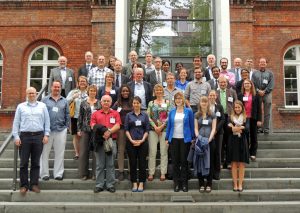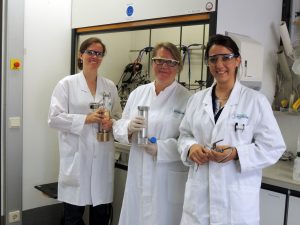Gulf of Mexico Oil Spill Research Symposium in Europe
– September 9, 2013
The Technical University of Hamburg at Harburg (TUHH), Germany hosted the 1st Hamburg Symposium on Deep-Sea Oil Spills on Wednesday September 4, 2013. The conference brought together North American and European expertise to improve quick and effective response to future oil spills and minimize their environmental impact.
TUHH is a member of the Center for Integrated Modeling and Analysis of the Gulf Ecosystem (C-IMAGE) research consortium led by Steven Murawski with the University of South Florida. Murawski gave an overview of the Gulf of Mexico Research Initiative to 45 attendees who represented five countries, ten European agencies, three GoMRI-funded consortia, and private technology/instrument manufacturers. Murawski said, “This was a fantastic opportunity to coordinate the research projects that our European partners are undertaking and to foster potential additional collaborators in the private sector. The capabilities and ongoing studies discussed at the symposium will be critical to better understanding the nature and consequences of the Deepwater Horizon oil spill and in helping the offshore oil industry to avoid such incidents in the future.”
During the symposium, researchers presented work on multiphase flows (mixtures of oil and gas, similar to real-world conditions) under deep sea conditions. They discussed equipment and measurement techniques for high-pressure applications. Participants gained new insights into the biodegradation processes of oil under deep sea conditions and the role of dispersants and clay minerals in the formation and sedimentation of oiled marine snow aggregates.
TUHH houses a high pressure facility where closed chambers can be pressurized up to 550 times the atmospheric pressure at sea level and cooled to just above the freezing point of sea water for these experiments. The Deepwater Horizon accident occurred at 150 times atmospheric pressure and about 4 degrees C, and many of the ongoing experiments simulate these conditions.
This research was made possible in part by a Grant from BP/The Gulf of Mexico Research Initiative (GoMRI) through the Center for Integrated Modeling and Analysis of the Gulf Ecosystem (C-IMAGE) consortium. The GoMRI is a 10-year, $500 million independent research program established by an agreement between BP and the Gulf of Mexico Alliance to study the effects of the Deepwater Horizon incident and the potential associated impact of this and similar incidents on the environment and public health.
© Copyright 2010-2017 Gulf of Mexico Research Initiative (GoMRI) – All Rights Reserved. Redistribution is encouraged with acknowledgement to the Gulf of Mexico Research Initiative (GoMRI). Please credit images and/or videos as done in each article. Questions? Contact web-content editor Nilde “Maggie” Dannreuther, Northern Gulf Institute, Mississippi State University (maggied@ngi.msstate.edu).







